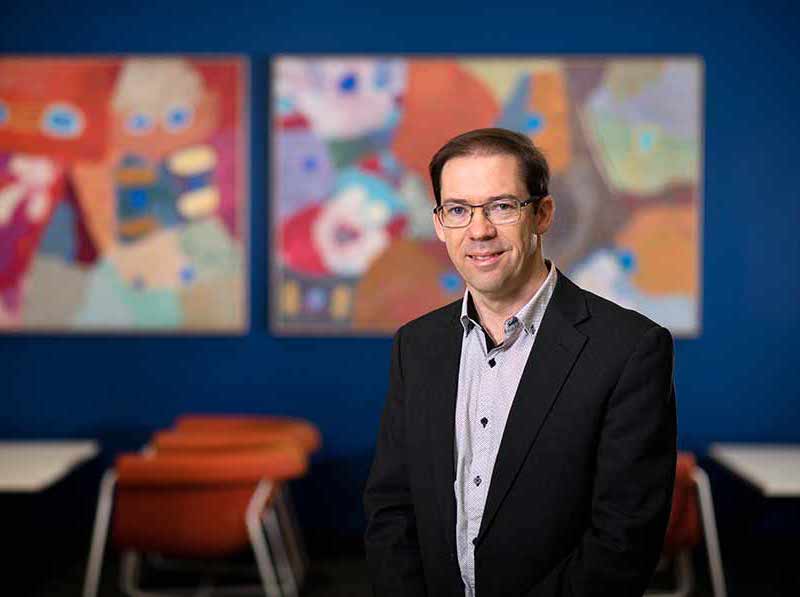Researcher Highlights
Using digital technology to improve health and wellbeing
Nathan Scott
Nathan Scott’s research hopes to make rehabilitation more accessible for stroke survivors, allowing services normally conducted face-to-face to be delivered using mobile devices.

Nathan Scott’s research and use of digital technology aims to make rehabilitation quicker and easier for stroke survivors. In Australia, stroke is one of the biggest killers and a leading cause of disability with 38% of survivors suffering Aphasia, a communication disability caused by damage to the language centres of the brain. It has significant implications for an individual’s functioning and quality of life however it is often treatable through rehabilitation. Nathan is working on a project that is bringing rehab services to patients in their own homes.
“We are experimenting with mobile digital technology to provide a rehabilitation service that people can undertake at their own pace without having to travel. Small amounts of regular rehab may often be more effective than undertaking it once off for a longer duration, so if people can work on it more frequently at home, we believe they will achieve greater improvements in their speech,” Nathan said.
Nathan is a sound technologist, musician and developer and is using these skills to produce online rehabilitation material that is self-paced and can be watched on the patient’s mobile device. He is also working on research that aims to use mobile devices to enhance the monitoring and feedback of improvements to patient’s speech.
“We are looking at using mobile phones to track a patient’s face as they talk and sing. This data can be analysed and also sent to a speech pathologist to monitor changes in their facial movements and speech patterns over time,” Nathan commented.
Nathan also uses electroencephalogram headsets to measure brainwaves while people engage in music-making.
“It’s an area I find fascinating,” Nathan said. “I’m working with neurotechnology to gather and process brain data then represent it in a meaningful and artistic visualisation.”
Singing for stroke recovery
Nathan works with the team that facilitates Newcastle’s BrainWaves Choir, a choir for people who have survived a stroke.
“We’ve seen evidence of people’s speech returning after stroke and words spoken after singing. The choir has also improved people’s social connection and we’ve seen great demand for it, a trend that is echoed around the world as choirs for wellbeing gain popularity due to their inherent medical benefits,” Nathan said.
“The rehabilitation videos we aim to produce can supplement the physical face to face interactions stroke survivors have at the choir and with their speech pathologists,” he said.
“The brain has neuroplasticity and can form new neural connections throughout a person’s life. We want to provide ways to help the brain adapt following a stroke. I’m looking at how we can take this into the digital domain and innovate to support stroke survivors.”
“Stroke is a leading cause of disability in Australia. This work aims to help people improve stroke survivors’ quality of life.”
Bringing international musicians together through digital technology
Nathan has always been passionate about music and digital technology since working with Atari computers in the 1990’s. He studied sound production in Sydney before completing a Masters degree looking at the Information and Communication Technology literacy of music educators.
At UON he has specialised in sound and video engagement through digital networks and was telematic manager for the 2012 International Space Time Concerto Competition. Partnering with AARNet and Polycom, the event created audio and visual hubs across five countries to create an online streaming network.
“The aim of the event was to push the boundaries of music performance through a global real-time collaboration. It drew on high-speed research networks while celebrating historical and emerging musical styles. Engaging musicians and audiences in five locations was a challenge, particularly with the issue of latency over such large distances” Nathan said.
“It was a really interesting project to work on and highlighted what can occur when a creative research team is put together.”
The University of Newcastle acknowledges the traditional custodians of the lands within our footprint areas: Awabakal, Darkinjung, Biripai, Worimi, Wonnarua, and Eora Nations. We also pay respect to the wisdom of our Elders past and present.